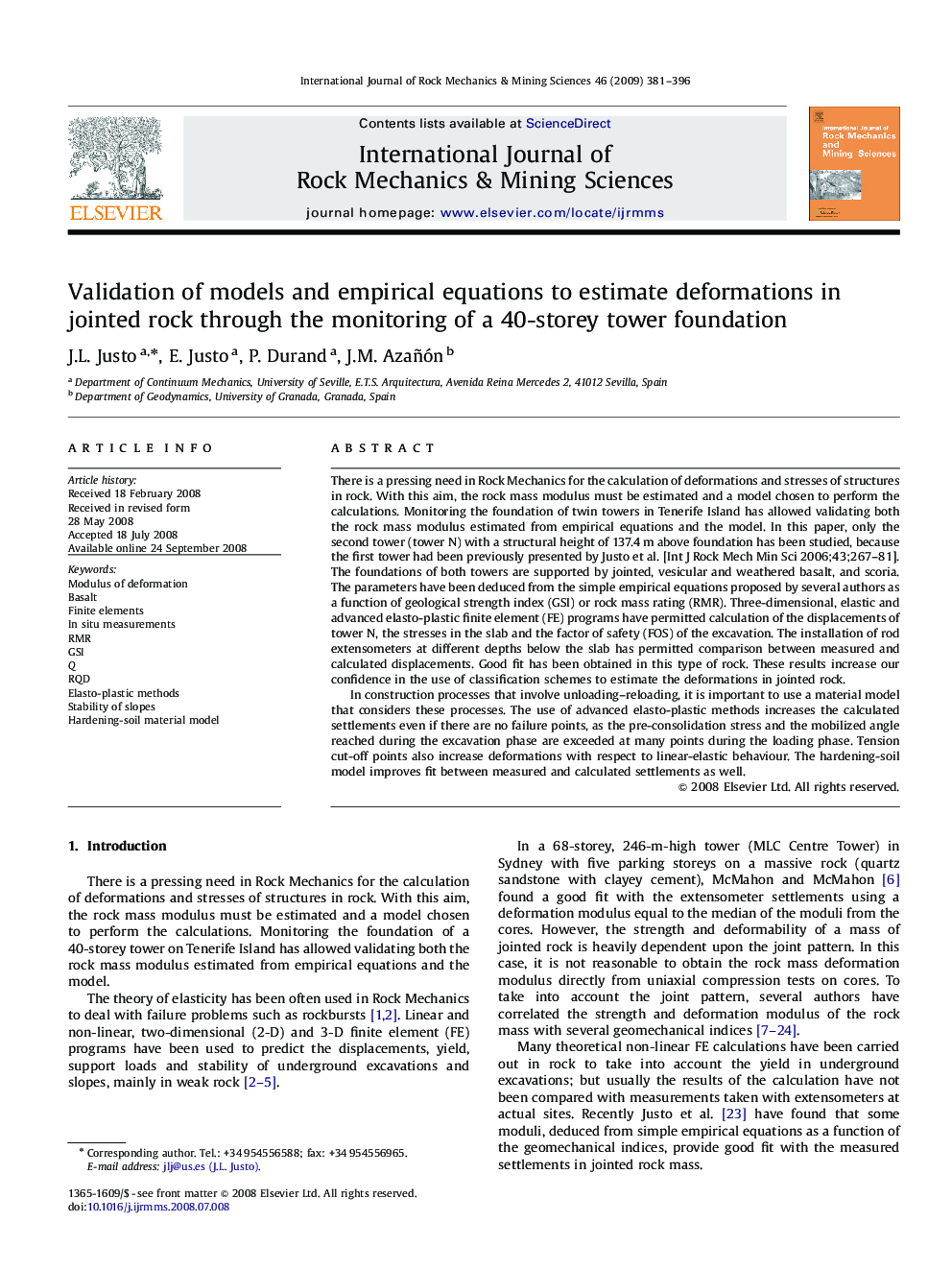| کد مقاله | کد نشریه | سال انتشار | مقاله انگلیسی | نسخه تمام متن |
|---|---|---|---|---|
| 809975 | 1468743 | 2009 | 16 صفحه PDF | دانلود رایگان |

There is a pressing need in Rock Mechanics for the calculation of deformations and stresses of structures in rock. With this aim, the rock mass modulus must be estimated and a model chosen to perform the calculations. Monitoring the foundation of twin towers in Tenerife Island has allowed validating both the rock mass modulus estimated from empirical equations and the model. In this paper, only the second tower (tower N) with a structural height of 137.4 m above foundation has been studied, because the first tower had been previously presented by Justo et al. [Int J Rock Mech Min Sci 2006;43;267–81]. The foundations of both towers are supported by jointed, vesicular and weathered basalt, and scoria. The parameters have been deduced from the simple empirical equations proposed by several authors as a function of geological strength index (GSI) or rock mass rating (RMR). Three-dimensional, elastic and advanced elasto-plastic finite element (FE) programs have permitted calculation of the displacements of tower N, the stresses in the slab and the factor of safety (FOS) of the excavation. The installation of rod extensometers at different depths below the slab has permitted comparison between measured and calculated displacements. Good fit has been obtained in this type of rock. These results increase our confidence in the use of classification schemes to estimate the deformations in jointed rock.In construction processes that involve unloading–reloading, it is important to use a material model that considers these processes. The use of advanced elasto-plastic methods increases the calculated settlements even if there are no failure points, as the pre-consolidation stress and the mobilized angle reached during the excavation phase are exceeded at many points during the loading phase. Tension cut-off points also increase deformations with respect to linear-elastic behaviour. The hardening-soil model improves fit between measured and calculated settlements as well.
Journal: International Journal of Rock Mechanics and Mining Sciences - Volume 46, Issue 2, February 2009, Pages 381–396